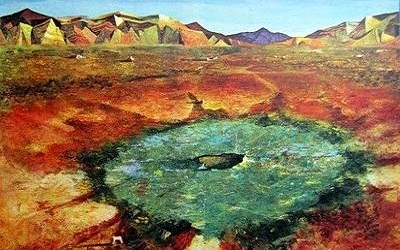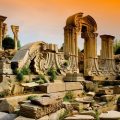随着PTE考生对PTE口语和PTE听力的重视,大家口语和听力的分数得到极大提高,但是PTE阅读渐渐成为考生们新的难题。
墨尔本悉尼文波PTE特别为PTE考生们挑选了适合练习PTE阅读的文章,主题,内容,长度都与PTE阅读题中的文章相似。激活学过的词汇,更新新的词汇,提高阅读速度,全面提升自己的阅读能力。
The explosion that opened the atomic age more than 70 years ago is helping scientists better understand another dramatic event: the formation of the moon.
On July 16, 1945, the U.S. Army detonated the first-ever nuclear bomb, conducting the event at the Trinity test site in southern New Mexico. The extreme heat of the blast melted the surrounding sandy soil’s top layer into a green, radioactive glass known as trinitite for about 1,150 feet (350 meters) in all directions from ground zero.
Now, a new study shows that water and other “volatile” compounds are scarce in this trinitite, just as they are in moon rocks.
Many astronomers think the moon coalesced out of material blasted into space by a huge collision, or series of collisions, involving the proto-Earth and a Mars-size body (or bodies) roughly 4.5 billion years ago. Theory predicts that such impacts would have generated immense amounts of heat, which in turn would have driven volatiles out of the rocks that eventually formed the moon. The new trinitite analysis bolsters this notion, said study lead author James Day, of the Scripps Institution of Oceanography at the University of California, San Diego.
“This study basically provides empirical, experimental, if you will, evidence—and that experiment is the Trinity nuclear blast—to show that the signatures that we observe in the moon really are formed by these high-temperature, volatile-loss processes,”
detonate: v. 引爆,爆炸
scarce: adj. 缺乏的, 罕见的
coalesce: v. 联合;合并
bolster: v. 支撑;加固
empirical: adj. 以观察或实验为依据的





